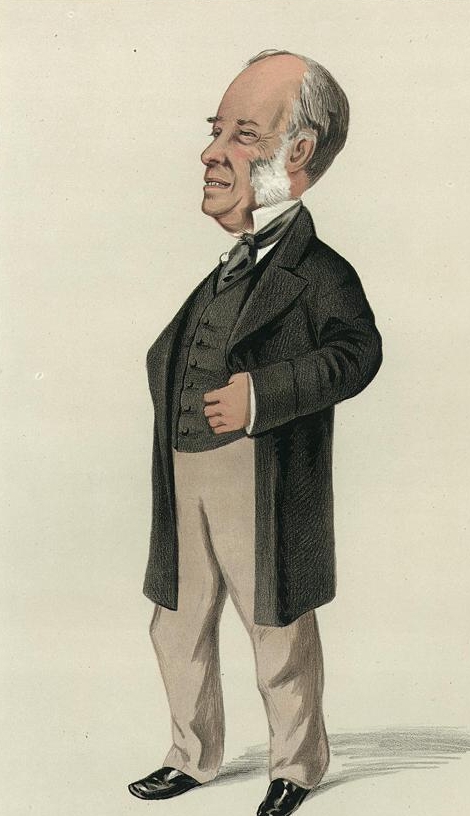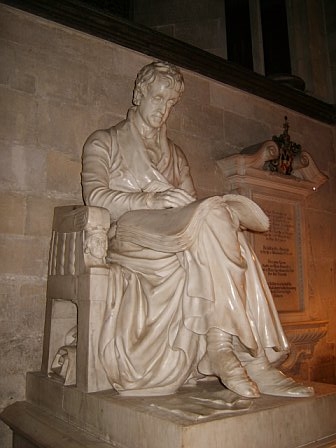|
Bradenstoke
Bradenstoke is a village in Wiltshire, England, lying to the north of the former RAF Lyneham airbase and northwest of Lyneham. Originally lying within Braydon Forest, the "stoke" means "settlement". Largely consisting of a long and narrow main street, the village has a church, one chapel (it used to have two chapels but the Methodist Chapel has been converted into a dwelling), a village hall and a pub. The Post Office closed in 2008. History Bradenstoke is the oldest community in the present-day parish, with 42 households recorded at ''Stoche'' in Domesday Book. In 1866, the ecclesiastical parish of Bradenstoke-cum-Clack was created for the newly built church. The name Bradenstoke was revived in the mid-twentieth century and is now used exclusively. A medieval limestone village cross stands at the side of the road near the church, having been moved from the middle of the road in the 20th century. Now headless, its base serves as a war memorial. An independent congregatio ... [...More Info...] [...Related Items...] OR: [Wikipedia] [Google] [Baidu] |
Lyneham, Wiltshire
Lyneham is a large village in north Wiltshire, England, within the civil parish of Lyneham and Bradenstoke, and situated southwest of Royal Wootton Bassett, north of Calne and southwest of Swindon. The village is on the A3102 road between Calne and Wootton Bassett. The part of Lyneham village close to the parish church is known as Church End. The civil parish includes the village of Bradenstoke and the hamlets of Preston and The Banks. History In 1086, Domesday Book recorded 42 households at ''Stoche'' in the northwest of the modern parish. Earthworks in this area known as Clack Mount, including a mound 20 metres in diameter, could be from a Norman motte-and-bailey castle, although the early history is uncertain. Bradenstoke Priory was founded nearby in 1142, possibly on the site of an earlier chapel. The hamlet on both sides of the road leading to the priory was called Clack from the 14th century, as shown on Andrews' and Dury's map of 1773; in the 20th century the name Br ... [...More Info...] [...Related Items...] OR: [Wikipedia] [Google] [Baidu] |
St Donat's Castle
St Donat's Castle ( cy, Castell Sain Dunwyd), St Donats, Wales, is a Middle Ages, medieval castle in the Vale of Glamorgan, about to the west of Cardiff, and about to the west of Llantwit Major. Positioned on cliffs overlooking the Bristol Channel, the site has been occupied since the Iron Age, and was by tradition the home of the Celtic chieftain Caractacus, Caradog. The present castle's origins date from the 12th century when the de Haweys and later Stradling baronets, Peter de Stradling began its development. The Stradlings held the castle for four hundred years, until the death of Sir Thomas Stradling in a duel in 1738. During the 18th century, the castle's status and condition declined and by the early 19th century it was only partly habitable. The later 19th and early 20th centuries saw several restorations. In 1852, it was purchased by John Whitlock Nicholl Carne, who claimed descent from the Stradlings but whose efforts at reconstruction were not well regarded. More en ... [...More Info...] [...Related Items...] OR: [Wikipedia] [Google] [Baidu] |
Sir Gabriel Goldney, 1st Baronet
Sir Gabriel Goldney, 1st Baronet (25 July 1813 – 8 May 1900) was a Conservative politician who sat in the House of Commons from 1865 to 1885. He was created a baronet in May 1880. Ancestry and early life The Goldney family, from Bristol, became clothiers in Chippenham in the sixteenth century and were long afterwards associated with Wiltshire, and particularly the town. An ancestor, Henry Goldney, had also been a member of parliament for Chippenham and was in 1553 appointed the first " Bayliff" of Chippenham. A 17th-century ancestor, also named Gabriel, left bequests in his will to provide "greatcoats for six poor inhabitants". Goldney was born on 25 July and baptised at Chippenham on 3 December 1813. His father was Harry Goldney (1774–1852) and his mother Elizabeth (née Reade, c. 1789–1863). He was educated at Christ's Hospital (of which he later became a governor) from 1820 to 1828. Goldney married Mary Anne Alexander in Corsham on 16 September 1839, and they ha ... [...More Info...] [...Related Items...] OR: [Wikipedia] [Google] [Baidu] |
William Randolph Hearst
William Randolph Hearst Sr. (; April 29, 1863 – August 14, 1951) was an American businessman, newspaper publisher, and politician known for developing the nation's largest newspaper chain and media company, Hearst Communications. His flamboyant methods of yellow journalism influenced the nation's popular media by emphasizing sensationalism and human interest stories. Hearst entered the publishing business in 1887 with Mitchell Trubitt after being given control of ''The San Francisco Examiner'' by his wealthy father, Senator George Hearst. After moving to New York City, Hearst acquired the '' New York Journal'' and fought a bitter circulation war with Joseph Pulitzer's '' New York World''. Hearst sold papers by printing giant headlines over lurid stories featuring crime, corruption, sex, and innuendos. Hearst acquired more newspapers and created a chain that numbered nearly 30 papers in major American cities at its peak. He later expanded to magazines, creating the largest ne ... [...More Info...] [...Related Items...] OR: [Wikipedia] [Google] [Baidu] |
Charles Francis Hansom
Charles Francis Hansom (27 July 1817 – 30 November 1888) was a prominent Roman Catholic Victorian architect who primarily designed in the Gothic Revival style. Career He was born of a Roman Catholic family in York. He was the brother of Joseph Aloysius Hansom, architect and creator of the Hansom cab, and father of the architect Edward Joseph Hansom. He practised in partnership with his brother, Joseph, in London from 1854. This partnership was dissolved in 1859 when Charles established an independent practice in Bath with his son Edward (born 22 October 1842) as an articled clerk. He took his son into partnership in 1867, by which time the practice had moved to Bristol, with a large West Country practice of church and collegiate architecture. In Bristol he took on Benjamin Bucknall as an assistant. Clifton College The original Clifton College buildings were all designed by Hansom. His first design at Clifton was for Big School (then a meeting hall and now the school cante ... [...More Info...] [...Related Items...] OR: [Wikipedia] [Google] [Baidu] |
Unitary Authorities Of England
The unitary authorities of England are those local authorities which are responsible for the provision of all local government services within a district. They are constituted under the Local Government Act 1992, which amended the Local Government Act 1972 to allow the existence of counties that do not have multiple districts. They typically allow large towns to have separate local authorities from the less urbanised parts of their counties and originally provided a single authority for small counties where division into districts would be impractical. However, the UK government has more recently proposed the formation of much larger unitary authorities, including a single authority for North Yorkshire, the largest non-metropolitan county in England, at present divided into seven districts. Unitary authorities do not cover all of England. Most were established during the 1990s, though further tranches were created in 2009 and 2019–21. Unitary authorities have the powers and ... [...More Info...] [...Related Items...] OR: [Wikipedia] [Google] [Baidu] |
Listed Building
In the United Kingdom, a listed building or listed structure is one that has been placed on one of the four statutory lists maintained by Historic England in England, Historic Environment Scotland in Scotland, in Wales, and the Northern Ireland Environment Agency in Northern Ireland. The term has also been used in the Republic of Ireland, where buildings are protected under the Planning and Development Act 2000. The statutory term in Ireland is " protected structure". A listed building may not be demolished, extended, or altered without special permission from the local planning authority, which typically consults the relevant central government agency, particularly for significant alterations to the more notable listed buildings. In England and Wales, a national amenity society must be notified of any work to a listed building which involves any element of demolition. Exemption from secular listed building control is provided for some buildings in current use for worship, ... [...More Info...] [...Related Items...] OR: [Wikipedia] [Google] [Baidu] |
Frances Lincoln
Frances Elisabeth Rosemary Lincoln (20 March 1945 – 26 February 2001) was an English independent publisher of illustrated books. She published under her own name and the company went on to become Frances Lincoln Publishers. In 1995, Lincoln won the ''Woman of the Year for Services to Multicultural Publishing'' award. Education Frances Lincoln went "unhappily" to school in Bedford, moving after a year to St George's School, Harpenden, where she became Head Girl. Her university education was at Somerville College, Oxford. (Somerville at that time was a women's college, known in Oxford as "the bluestocking college".) There she read Greats (the Oxford term for traditional courses in the humanities, with emphasis on the ancient classics of Greece and Rome, including philosophy). A fellow-student, the drug smuggler Howard Marks, described her as "vivacious" in his 1996 autobiography '' Mr. Nice''. Career In 1970, Lincoln started work as an Assistant Editor at the London-based p ... [...More Info...] [...Related Items...] OR: [Wikipedia] [Google] [Baidu] |
Augustinians
Augustinians are members of Christian religious orders that follow the Rule of Saint Augustine, written in about 400 AD by Augustine of Hippo. There are two distinct types of Augustinians in Catholic religious orders dating back to the 12th–13th centuries: * Various congregations of Canons Regular also follow the Rule of Saint Augustine, embrace the evangelical counsels and lead a semi-monastic life, while remaining committed to pastoral care appropriate to their primary vocation as priests. They generally form one large community which might serve parishes in the vicinity, and are organized into autonomous congregations. * Several orders of friars who live a mixed religious life of contemplation and apostolic ministry. The largest and most familiar is the Order of Saint Augustine (OSA), founded in 1244 and originally known as the Hermits of Saint Augustine (OESA). They are commonly known as the Austin Friars in England. Two other orders, the Order of Augustinian Recollects a ... [...More Info...] [...Related Items...] OR: [Wikipedia] [Google] [Baidu] |
High Sheriff Of Wiltshire
This is a list of the Sheriffs and (after 1 April 1974) High Sheriffs of Wiltshire. Until the 14th century, the shrievalty was held ''ex officio'' by the castellans of Old Sarum Castle. On 1 April 1974, under the provisions of the Local Government Act 1972, the title of Sheriff of Wiltshire was retitled as High Sheriff of Wiltshire.Local Government Act 1972: Section 219 at legislation.gov.uk, accessed 28 April 2020: ”Sheriffs appointed for a county or Greater London shall be known as high sheriffs, and any reference in any enactment or instrument to a sheriff shall be construed accordingly in relation to sheriffs for a county or Greater London". Sheriff To 1400 *1066: Edric *1067–1070: Philippe de Buckland *1085: Aiulphus the Sheriff *1070–1105: < ...[...More Info...] [...Related Items...] OR: [Wikipedia] [Google] [Baidu] |

.jpg)





